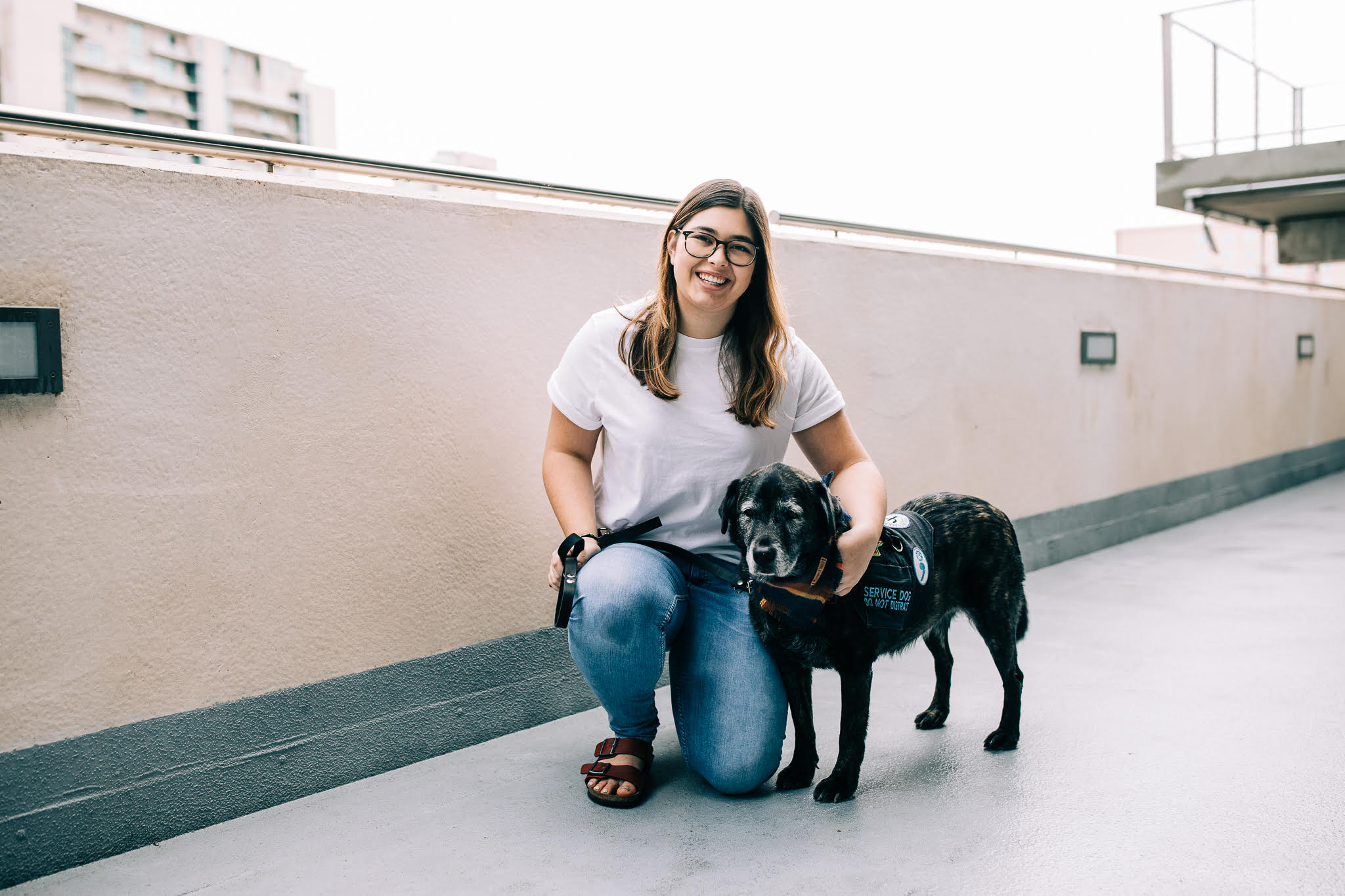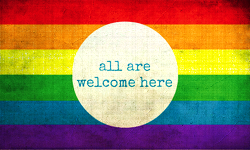“But you don’t look sick.”
This is a common phrase heard by the invisible illness community; while people may think it’s a sort of compliment, it’s actually extremely invalidating and frustrating. We constantly feel misunderstood, judged and ostracized by those around us (even close family, friends and healthcare professionals).
What do you do when you feel this way? What do you do when your body throws the fucking kitchen sink at you, suddenly making you feel all alone? You pretend. You give into the invisibility of your disease and mask it the best you can. I am exhausted from hiding my illness from others, and this is one reason for starting this blog.
After beginning to share my life with chronic illness, I decided I wanted to expand the dialogue. I enlisted the help of a few incredible, inspiring and BADASS young women who all battle at least one form of invisible illness (mental and/or physical). Their stories help to shed light on invisible illness and break down certain stigmas surrounding this community.
Please read about their incredible health journeys; waging constant battle against your own body is so incredibly difficult, but you are not alone. We understand you. We hear you. We see you.
Meet Hannah Martin.
Invisible Illness: Depression
SUICIDE TRIGGER WARNING!
“I’ve had quite the mental health journey over the last eight years. One of the hardest parts about having major depressive disorder (MDD), besides the recurrent depressive episodes and years of therapy, is how misunderstood it is.
Even with all the internet exposure mental health has gotten throughout the past few years, there is still a lot of stigma and I still have to be extremely careful where and with whom I share my experience with.
I’ve had to hide my disorder with teachers, employers, and even friends who think those with depression are just weak minded.
I used to hide my MDD from everyone because I didn’t want to freak people out. Over time, however, my depressive episodes got worse. I felt like I couldn’t talk to anyone about it in an honest way and had horrible self esteem because of it.
It took me until I was suicidal and ready to give up completely that I was finally able to tell my mom how bad I was getting. This was during Spring Break, my sophomore year of college. I had driven home to the Seattle area from Boise and the only thing on my mind was how I planned to end my life that week. It took me five days to finally settle on a plan. I almost went through with it but I just decided to give it one more day.

I went to sleep that night and the next morning my mom found evidence of what I had planned to do. She asked me if I planned to harm myself. Tears formed in my eyes and she asked me if it was worse than that. I was able to nod my head yes and then immediately started sobbing. My mom, who is a real life super hero, immediately jumped into action. She called a suicide help line to figure out what to do in this situation. They instructed her to take me to the ER. I spent the night there and was able to calm down enough to be sent home.
I saw my psychiatrist a few days later to put together a plan of action. My psychiatrist put into words something I had never heard before. He explained to me that the brain can become so depressed that it’s considered damage. That’s what had happened to me. My brain was damaged from how long my depression had gone untreated. I needed time to heal. He recommended that I withdraw from school and enroll in a rehabilitation-like therapy program for people with extreme mental illnesses like mine.
This was the first time I had ever experienced someone take my problem seriously and this was the first time I ever felt like my disorder was valid and that I wasn’t just being dramatic. For the first time in years I had hope that I was going to be okay. It wasn’t any instant fix but my active suicidal thoughts became passive ones and after about 150 hours in therapy over the summer, they vanished entirely.
I’ve done a lot of work on myself since then and have learned to be more vulnerable when I need help. I still have bad days and have even had a couple depressive episodes since then. I’ll probably be working against this disorder for the rest of my life.
I think of it as having a sensitive brain that requires extra attention. I do a lot to stay healthy every day. I constantly base my decisions off how it will affect my mental health. Sometimes I’m forced to choose against my mental health, especially while being a student.
I just try to regulate as much as I can. Sometimes I miss assignments after a bad mental health day. Ive learned to forgive myself on bad days and work ahead on good ones. I judge myself less and because of that I’m able to push myself to succeed.

The cool part about all of this, because it’s been a pretty bleak story up until this point, is that I finally found something I can be passionate about. I’m currently studying psychology in hopes of one day becoming a clinical therapist.
Having something to be passionate about has made everything I’ve gone through worth it.
I feel so much more sure of myself and I’m so so so glad I lived to see myself get to this point. I know I’ll struggle in the future but I have a purpose and several emergency plans and a whole mental health team in place to prevent another life threatening brain injury.” -Hannah
If you struggle with depression and are considering self-harm or suicide, please seek help.
National Suicide Prevention Lifeline: 1-800-273-8255
OR TEXT:
“Connect” to 741741 for FREE help from Crisis Text Line
Invisible Illnesses: Type 1 Diabetes & Celiac Disease
“In seventh grade I was diagnosed with Type 1 Diabetes as well as Celiac Disease. I was in DKA and miserable. It didn’t hit me that I would have these two incurable diseases for the rest of my life and when I did realize it, it hit me hard. Type 1 is hard to deal with mentally and physically and for all my friends with diabetes, you are all so incredibly strong.
I am currently recovering from Diabulimia which is where you restrict or don’t take insulin in order to not gain weight.
Disordered eating and many body weight and image issues may come with any diagnosis, and no one should feel isolated or ugly because of their disease or disorder.
We are here and visible and beautiful.” – Emma
Invisible Illness: Multiple Mental Illnesses
“I have suffered at the hands of psychiatric conditions for the majority of my life; not only until I reached high school did they become truly debilitating. I tried numerous treatment methods with little success.
Eventually the idea of a service dog was brought up. Fast forward and Winnie and I have been working together for a year and a half. Her tasks help mitigate my disabilities and allow me to live an independent life. While she does not cure my afflictions, she helps me manage them in a way I didn’t ever think was possible.
There is challenge to it though. Aside from the dog attached at my hip, I appear as a normal, healthy young adult. My illnesses, which were once invisible, are now made visible with the use of a service dog.
While I certainly get unwanted comments and invasive questions whenever I am out in public, it is worth it to be able to live the quality life I deserve.
In a time where I was consumed by so much darkness, Winnie came to me as a guiding light and my life has been brighter and filled ever since. She is my guardian angel and I know that together, we can face the hard things.”
-Hannah
Invisible Illness: Lupus
Koda has struggled to confirm a Lupus diagnosis with her physician, despite her blood results testing positive for Lupus three different times; they instead wrote her illness off as “chronic lower back pain”. However, Lupus is so much more than this.
According to the Mayo Clinic website,”Lupus is a systemic autoimmune disease that occurs when your body’s immune system attacks your own tissues and organs. Inflammation caused by lupus can affect many different body systems — including your joints, skin, kidneys, blood cells, brain, heart and lungs.Lupus can be difficult to diagnose because its signs and symptoms often mimic those of other ailments. The most distinctive sign of lupus — a facial rash that resembles the wings of a butterfly unfolding across both cheeks — occurs in many but not all cases of lupus.
Some people are born with a tendency toward developing lupus, which may be triggered by infections, certain drugs or even sunlight. While there’s no cure for lupus, treatments can help control symptoms.”
Koda is very sensitive to sunlight; she has to limit her time exposed to the sun, or else she breaks out in hives.
She is not the only person, living with a chronic illness, who struggles to gain the proper validation & diagnosis from her doctors. Getting recognition for chronic pain is hard enough, but it is that much more difficult when you are a female. We are dismissed far too often.
It has been an honor to know and work with these ladies. I can’t thank them enough for their courage & vulnerability in sharing their stories.
Also, a BIG thank you to our lovely photographer, Randi. Her work is incredible.
https://www.lemonandhoneyphotos.com/contact
“Here’s to strong women; may we know them, may we be them, may we raise them.”
We are here for you.
Ashley xx
















Hello Ashley,
Someday soon I will show your blog to Emma, who will certainly find solace with this special group of ladies.
You may remember that you and your brother once babysat Emma. She is now nearly 13.
Emma suffered many years from cerebral palsy without being properly diagnosed. Attributes that I would mention to her doctors would be brushed aside.
Then, at 7- 3/4 years of age, she began having clinical seizures. We didn’t discover until she was nearly 8- 1/2 that she was missing a significant part of her left frontal lobe of her brain – due to an insult of some type either in utero or shortly after birth.
It wasn’t until her right foot began turning under that we changed her entire caregiving system and now we travel 200 miles one way to get her the care she needs. It was then we finally got the diagnosis of CP at the age of 11- 1/2. Most children are diagnosed by the age of 3.
For most of her life so far she has been misunderstood and/or judged, because outwardly, at a glance, she looks “normal”. How I despise that word and the comparisons.
As I type this, we wait for her to recover from a partial brain resection that she underwent on Friday, December 13, to remove the seizure focus in her brain. With it, they took one last language center that never migrated to her right side.
Her hair will regrow; scars will heal. I hope and pray the seizures will disappear. She will look “normal”. But she will need your blog and the stories it carries to support her, as well as all the support her friends and family can and will provide.
Thank you in advance for recognizing a need and working so diligently to fill it.
With love,
Charil Reis
Hi Charil,
I definitely do remember; WOW– your sweet girl is incredibly strong (as are you). Thank you so much for sharing that with me and for the kind words. I am thinking of Emma, you and your family; I’m sending light, love and as many positive vibes as possible. I hope she can find comfort within this community, and please know, I am always a resource if she needs to talk to someone who understands these battles. She is definitely not alone!! Happy Holidays.
Love, Ashley
I too have dealt with depression and it’s so true that the stigma people have about it is completely untrue but most of all uneducated opinions. I have tried several times to commit suicide and it was all due to manic depression. Thankfully after my last attempt and being revived I was able to crawl out of the deep dark abyss I was in, but it took time. I took getting away from the situation and people who pushed me into that hole. When I got out my suicidal thoughts deminished and the negative thought fog lifted. I am finally happy. I finally have left the past where it belongs in the past and no longer blame problems or feeling on past problems. Thanks to you very brave women for writing this and letting people not feel alone in a real life struggle that effects millions of people. THANKS and keep up the great work and remember you have eachother, and if you are able to stay out of the negative thought path then life becomes your own paradise!!!
Sharon– thank you so much for sharing your battles. You have incredible strength, and I appreciate the message a ton. Thank you, thank you. I am so glad you survived and are recovering. Sending you lots of good vibes!
Thank you Ashley, this is the first time I have ever publicly spoken about it, but your stories and my gut instinct told me it was time to say it out loud so I can let my past life of depression go and hope I don’t repeat it ever again. It’s just hard when the people you think are there for you really aren’t so having to pull yourself up by the boot straps by yourself and climbing out of the hole without a hand from a friend or family member makes it that much more difficult. I hope this post of yours and the other women’s stories really does open up other people’s eyes but most of all their minds to what depression is and how it effects the person dealing with it. Merry Christmas and I hope you all have a beautiful New Year as well!!!
Thank you again for sharing. I’m thinking of you and sending lots of love to your and your family! Merry Christmas!
This grandmother is so proud of you, you write so wonderfully and passionately. You are blessed with such strength and courage and the ability to share your exhausting struggle and this great burden in your life. You have opened my eyes and given yourself a voice and have given others a voice, you are amazing! Thank you for stepping out to share your story. Grandma B. Love you!
!
Aw grandma, thank you so much! I love you and am so blessed to have you and your constant support!
Ashley, I dont know if you know who I am or what I have accomplished in life but your really amazing…I live in the Valley and know your dad…anyway, almost a decade ago I was diagnosed with a mental illness…battled with it most of my life…Anyway, my therapy is music…I have written well-known songs for major artists…i just wanted to stop by and tell you ladies to love living life because if your not loving life then you are not living life and life is worth living…Some of us struggle in life to find our belonging in a normal world…well what everyone else sees as normal…those with invisible diseases are definitely over looked and sometimes bare the most burden because people think we are normal when we struggle twice as hard as those that judge us…you ladies are amazing and thank you for this blog…I know the stories have to do with ladies but it allows me to SEE and read what some may need to see to guide them through life so they love it…i like to think, God did not make us this way if he did not know we could handle our lives…Happy Holidays and may your journey through life be ever so grand…oh and your dad helped give me a place in High School to go and help me escape this normal world…
Derrick,
Thank you so much for that incredible note; you really have no idea how much it means to me. Thank you for sharing your battle with me; you are so inspiring. My lovely dad has been a rock in my life, and I know this comment will mean so much to him. I, so often, resort to listening to music when I’m down, so I think what you do is amazing. Thank you again; I appreciate it so much. Happy Holidays to you and yours!!
Giving voice to the unheard about the uncomfortable takes courage. Too many of us don’t understand ‘invisible’ conditions affecting someone’s mind and/or body. Information not only educates us but hopefully opens our hearts and minds to show compassion, and at the very least, to not judge.
Thank you so much Colleen! I appreciate more than I can express.
Ashley, I was diagnosed Sophomore year in HS with Rheumatoid and Idiopathic Arthritis. My hands and wrists are the only joints free of these autoimmune diseases. As we got closer to the diagnosis, I began to get depressed. Teachers telling me I was fine and had to dry seated meanwhile my nerves we pinching in the back and sending shooting pain down through my legs. School counselors and nurses doubting my stories and my moms defense. No one understood and was willing to work with me. I saw doctor after doctor for 4 years in search of answers from the chronic pain, inflammation, nerve pinching, and muscle spasms. Finally a Juvenile Rheumatologist diagnosed me. Rarely is it noticed and often I am told (as you’ve mentioned) “you’re too young for this! I have a very small window of opportunity for remission so I have made myself come to terms with a lifetime of medication, doctors, and other forms of therapy to find relief. I find your stories and being so open to discuss and tell so comforting. I never realized how comforting it can be knowing you are not alone in the invisible illnesses. You are an incredibly strong young woman and I am blessed to have your inspiration in my life. Keep it up and stay strong! ❤️
Macy,
Damn girl– I had no idea! I absolutely understand these types of battles, and I am so sorry you had to deal with the ignorance that unfortunately comes with these illnesses. However, I’m so glad you’ve been able to find comfort here. It can be terribly lonely in this world, but just know I am always here if you need to chat with someone who understands.
Thank you so much for sharing that with me; it means so much to me. I am sending lots of love and good vibes your way! And I’m SO glad you finally received the help you needed!! xx